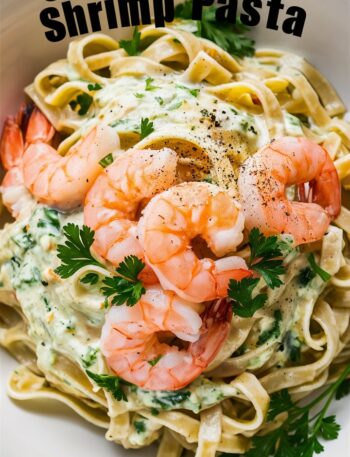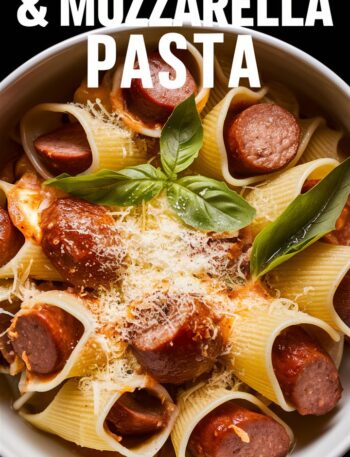Polish Sausage with Sauerkraut and Potatoes is more than just a meal—it’s a celebration of Eastern European culinary heritage. This dish combines the smoky richness of kielbasa, the tangy brightness of sauerkraut, and the earthy heartiness of potatoes to create a balanced, flavorful, and deeply satisfying meal. Perfect for busy weeknights, family dinners, or casual gatherings, this recipe is simple to prepare yet impressively flavorful.
In this comprehensive guide, we will explore the history, ingredients, preparation steps, expert tips, variations, nutritional benefits, and storage suggestions for this timeless dish.
Why Polish Sausage with Sauerkraut and Potatoes is So Loved

The appeal of this dish lies in its simplicity, flavor, and versatility. Every bite delivers a harmony of smoky, tangy, and savory notes. Beyond taste, it is also nutritionally balanced: the protein from the sausage, the fiber from potatoes, and the probiotics from sauerkraut make it both comforting and nourishing.
Its one-pan preparation makes it ideal for busy cooks, and the combination of familiar ingredients creates a dish that resonates across generations. For those exploring Polish cuisine, this is an excellent introduction to traditional flavors.
A Glimpse into the History
The combination of sausages, fermented vegetables, and hearty starches like potatoes has been part of Eastern European diets for centuries. Traditionally, this meal provided warmth and sustenance during long winters.
- Kielbasa (Polish sausage): Dating back to the Middle Ages, kielbasa is a symbol of Polish culinary craftsmanship. Smoked or fresh, it is prized for its robust flavor.
- Sauerkraut: Fermented cabbage was essential for preservation before refrigeration. Its tangy flavor became a signature taste in Polish and German cuisine alike.
- Potatoes: Introduced to Eastern Europe in the 17th century, potatoes became a staple for creating filling, nutritious meals.
These three ingredients together formed a dish that was economical, wholesome, and flavorful, a combination that continues to be cherished today.
Ingredients and Their Roles
Every ingredient in this recipe contributes to flavor, texture, and nutrition. Understanding each component helps in achieving a perfectly balanced dish.
1. Polish Sausage (Kielbasa)
The star of the dish, kielbasa brings smoky, savory richness. Traditionally made with pork, modern variations include turkey or chicken, offering lighter options while retaining flavor.
Tips for choosing sausage:
- Opt for high-quality sausages with minimal fillers.
- Smoked kielbasa deepens flavor; fresh varieties are lighter.
- If unavailable, smoked sausages or chorizo can substitute, though the authentic taste may vary.
2. Sauerkraut
Sauerkraut provides tanginess and brightness, balancing the richness of the sausage and potatoes.
Tips for preparation:
- Rinse and drain sauerkraut to reduce acidity unless you prefer a tangier flavor.
- Homemade or artisanal sauerkraut often tastes fresher than canned.
- For a milder option, lightly sauté shredded cabbage with vinegar.
3. Potatoes
Potatoes make the dish filling and hearty, with a creamy texture that complements the tang of sauerkraut and smokiness of the sausage.
Best choices:
- Waxy potatoes like Yukon Gold hold shape well.
- Russets work for a fluffier texture.
- Rich in potassium, vitamin C, and fiber, they enhance the meal’s nutritional profile.
4. Supporting Ingredients
- Onions and garlic: Create an aromatic base, adding depth to the dish.
- Chicken broth: Provides moisture and enhances flavor.
- Caraway seeds (optional): Traditional spice that complements sauerkraut.
- Salt and pepper: Season to taste, keeping in mind that sausage and sauerkraut are naturally salty.
Step-by-Step Instructions

Follow these steps for a perfectly balanced and flavorful Polish Sausage with Sauerkraut and Potatoes.
Step 1: Prepare Ingredients
- Slice the sausage into ½-inch pieces for even cooking.
- Peel and dice potatoes into bite-sized pieces.
- Rinse and drain sauerkraut to reduce excess tanginess.
Step 2: Cook the Sausage
- Heat 1 tbsp olive oil in a large skillet over medium heat.
- Brown the sausage slices 3–4 minutes per side.
- Remove and set aside. Browning enhances smokiness and creates flavorful pan bits.
Step 3: Sauté Aromatics
- In the same skillet, cook chopped onion until translucent, 3–4 minutes.
- Add minced garlic and sauté 1 minute until fragrant.
Step 4: Combine Potatoes and Sauerkraut
- Add potatoes and cook 5–6 minutes until lightly golden.
- Stir in sauerkraut and 1 cup chicken broth; add caraway seeds if using.
Step 5: Simmer with Sausage
- Return sausage to the skillet and mix gently.
- Cover and simmer on low heat 25–30 minutes until potatoes are tender and flavors meld.
- Check occasionally; add broth if it dries out.
Step 6: Season and Serve
- Taste and adjust salt and pepper.
- Serve hot with crusty bread, a simple salad, or alongside a light beverage like cider or sparkling water.
Expert Tips for the Perfect Dish
- Avoid mushy potatoes: Use waxy potatoes and check for doneness after 20 minutes.
- Control saltiness: Rinse sauerkraut and season lightly; adjust at the end.
- Enhance browning: Don’t overcrowd the pan to allow caramelization.
- Add vegetables: Bell peppers, carrots, or green beans add color and nutrition.
- Experiment with sausage: Smoked chicken, turkey, or vegan options work.
- Seasonal twists: Smoked paprika, mustard, or apple cider vinegar can add unique flavors.
Serving Suggestions
- Sides: Crusty bread, roasted vegetables, or a cucumber salad.
- Beverages: Beer, cider, or sparkling water with lemon.
- Accompaniments: Pickles, horseradish, or mustard enhance flavors.
Nutritional Benefits
Polish Sausage
- Protein-rich; provides essential fats and calories.
- Turkey or chicken sausages reduce fat while maintaining flavor.
Sauerkraut
- Packed with probiotics for gut health.
- High in vitamin C and antioxidants.
Potatoes
- High in potassium and vitamin B6.
- Provide fiber and slow-digesting carbs for satiety.
Aromatics and Broth
- Onions, garlic, and broth contribute vitamins and minerals with minimal calories.
Storage and Reheating
- Refrigeration: Cool completely; store in airtight container up to 3 days.
- Reheating: Warm gently on stovetop; add a splash of broth if dry.
- Freezing: Separate sauerkraut before freezing; add fresh when reheating to preserve texture.
Variations and Twists
- Slow Cooker Version: Brown sausage and sauté aromatics first, then transfer all ingredients to a slow cooker for 4–5 hours on low.
- Instant Pot Version: Sauté ingredients using the sauté mode, then pressure cook for 10 minutes.
- Vegetarian Option: Replace sausage with smoked tofu or plant-based sausage.
- Spicy Kick: Add chopped jalapeño or red pepper flakes for heat.
- Cheesy Finish: Sprinkle grated cheddar or Swiss cheese on top before serving.
Frequently Asked Questions (FAQs)
Q1: Can I use fresh cabbage instead of sauerkraut?
Yes, sauté shredded cabbage with a splash of vinegar for a milder tang.
Q2: How do I prevent potatoes from sticking?
Use a nonstick skillet or lightly oil the pan. Stir occasionally but avoid overmixing.
Q3: Can this dish be made ahead of time?
Absolutely. Prepare up to step 5, refrigerate, and finish simmering just before serving.
Q4: What type of sausage is best?
Traditional smoked kielbasa is ideal. Turkey, chicken, or plant-based sausages also work.
Q5: Can I make this gluten-free?
Yes, the recipe is naturally gluten-free as long as the broth and sausage are verified gluten-free.
Cultural Significance

This dish is a symbol of Polish culinary tradition. Often served at family gatherings, festivals, and winter holidays, it represents warmth, togetherness, and comfort. Its enduring popularity is a testament to how simple ingredients, when combined thoughtfully, create a meal that resonates across generations.
Conclusion
Polish Sausage with Sauerkraut and Potatoes is more than just a recipe; it’s a culinary experience that blends history, flavor, and nourishment. With its smoky, tangy, and hearty profile, it is perfect for family dinners, meal prepping, or celebrating traditional Eastern European flavors.





